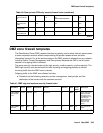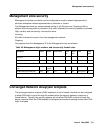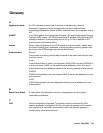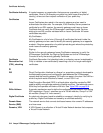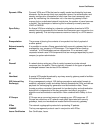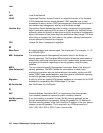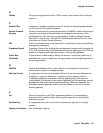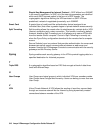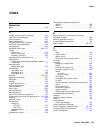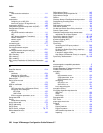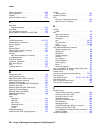
LAN
316 Avaya VPNmanager Configuration Guide Release 3.7
L
LAN Local Area Network
LDAP Lightweight Directory Access Protocol is a simplified version of the standard
X.500 distributed directory model standard. LDAP specifies how a client
accesses a directory server. LDAP has emerged as a favored protocol since it
also handles key management with key and certificate storage.
Lifetime, Key Payload key lifetime defines the extent to which a single set of cryptographic
keys is used when applying VPN services to IP packets. Key lifetimes can be
defined by either the amount of data acted on by this single set of cryptographic
keys or the amount of time these keys are used before a key change. The more
often a key is changed, the “more secure” the system, although performance
may be affected by frequent key changes.
LZS Lempel-Ziv-Stac, a compression algorithm.
M
Mask Pairs A network address and network mask. Two 4-byte pairs. For example, 1.1.1.0
and 255.255.255.0.
MIB - Enterprise The enterprise-specific Management Information Base in the Avaya Inc.
security gateways. The Enterprise MIB information allows the administrator to
obtain basic monitoring information such as the network table, packet counter,
and general information regarding the security gateway using third party
software.
MIB-II
(Non-Enterprise)
The non-enterprise specific Management Information Base in the Avaya Inc.
security gateways. The MIB-II allows the administrator to obtain basic
monitoring information such as device ethernet information, routing and ARP
tables, SNMP traps, packet statistics, and other general information regarding
the security gateway using third party software.
Migration A utility by which an existing VPNmanager database is converted into an LDAP
database for compatibility with VPNmanager 3.0 or later.
My Certificates See Certificates, My Certificates
N
NAT Network Address Translation (NAT) is a mechanism that allows private
(non-routable) networks to connect to public (routable) networks.
Not My security
gateway
If you are creating an extranet, choose “Not My security gateway” as the
Group’s associated security gateway. Doing this enables the “IP Address of
Extranet security gateway” entry field. Enter the IP address of the your partner
company’s security gateway. This is required if any VPNs serviced by a
VSU-1100, VSU-1010 or VSU-10 are in tunnel mode.




